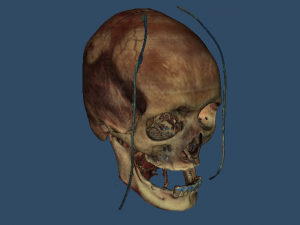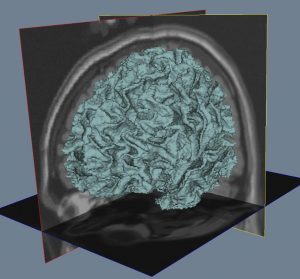Overview
Welcome to the Insight Toolkit (ITK). ITK is an open-source, cross-platform library that provides developers with an extensive suite of software tools for image analysis. Developed through extreme programming methodologies, ITK builds on a proven, spatially-oriented architecture for processing, segmentation, and registration of scientific images in two, three, or more dimensions. The goals for ITK include:
- Establish a foundation for future, reproducible research.
- Create a repository of fundamental algorithms.
- Develop a platform for advanced product development.
- Support commercial application of the technology.
- Create conventions for future work.
- Support education in scientific image analysis.
- Grow a self-sustaining community of software users and developers.
Purpose and Values
ITK is one of the largest and earliest open source projects within the scientific community. ITK is made by hundreds of community members around the globe with a diverse set of skills, personalities, and experiences working for open and reproducible research in image analysis.
We set out to build a great image analysis tool that serves a broad range of applications and environments. From research and education to industry and beyond, we are committed to contributing amazing features, teaching others, and helping our fellows for an honorable intention.
The primary goal of the ITK community is to include the largest number of contributors, with the most varied and diverse backgrounds. Our community is built upon values, and we welcome and encourage members to lead by example. More information can be found in the community Code of Conduct.
License
NumFOCUS holds the copyright of this software. NumFOCUS is a non-profit entity that promotes the use of open source scientific software for educational and research purposes. NumFOCUS delegates project governance to the Insight Software Consortium Council, an educational consortium dedicated to promoting and maintaining open-source, freely available software for medical image analysis.
The software is distributed as open source under an OSI-approved license. Starting with ITK 4.0, the Apache 2.0 license is used. For versions prior and including 3.20, the new and simplified BSD license is used. Before 3.6, a variation of the BSD license is used.
History
In 1999 the US National Library of Medicine of the National Institutes of Health awarded six three-year contracts to develop an open-source registration and segmentation toolkit, that eventually came to be known as the Insight Toolkit (ITK) and formed the basis of the Insight Software Consortium. ITK’s NIH/NLM Project Manager was Dr. Terry Yoo, who coordinated the six prime contractors composing the Insight consortium. These consortium members included three com-mercial partners—GE Corporate R&D, Kitware, Inc., and MathSoft—and three academic partners—University of North Carolina (UNC), University of Tennessee (UT) (Ross Whitaker subsequently moved to University of Utah), and University of Pennsylvania (UPenn). The Principle Investigators for these partners were, respectively, Bill Lorensen at GE CRD, Will Schroeder at Kitware, Vikram Chalana at Insightful, Stephen Aylward with Luis Ibañez at UNC, Ross Whitaker with Josh Cates at UT, and Dimitri Metaxas at UPenn. In addition, several subcontractors rounded out the consortium including Peter Raitu at Brigham & Women’s Hospital, Celina Imielinska and Pat Molholt at Columbia University, Jim Gee at UPenn’s Grasp Lab, and George Stetten at the University of Pittsburgh.
In 2002 the first official public release of ITK was made available. In addition, the National Library of Medicine awarded thirteen contracts to several organizations to extend ITK’s capabilities. The NLM has funded maintenance of the toolkit over the years, and a major funding effort was started in July 2010 that culminated with the release of ITK 4.0.0 in December 2011. The ITK community completed a major modernization of the toolkit’s interface, architectural improvements for improved performance, and Python packages for rapid prototyping with ITK 5.0.0, released in May 2019.
Citation
The papers:
McCormick M, Liu X, Jomier J, Marion C, Ibanez L. ITK: enabling reproducible research and open science. Front Neuroinform. 2014;8:13. Published 2014 Feb 20. doi:10.3389/fninf.2014.00013
Yoo TS, Ackerman MJ, Lorensen WE, Schroeder W, Chalana V, Aylward S, Metaxas D, Whitaker R. Engineering and Algorithm Design for an Image Processing API: A Technical Report on ITK – The Insight Toolkit. In Proc. of Medicine Meets Virtual Reality, J. Westwood, ed., IOS Press Amsterdam pp 586-592 (2002).
The books:
“The ITK Software Guide: Design and Functionality”
Fourth Edition
Johnson, McCormick, Ibanez.
published by Kitware Inc.
2015
ISBN: 9781-930934-28-3
“The ITK Software Guide: Introduction and Development Guidelines”
Fourth Edition
Johnson, McCormick, Ibanez.
published by Kitware Inc.
2015
ISBN: 9781-930934-27-6
Specific software version:
|
If you need more logos (different sizes or background colors), please contact support@kitware.com.




